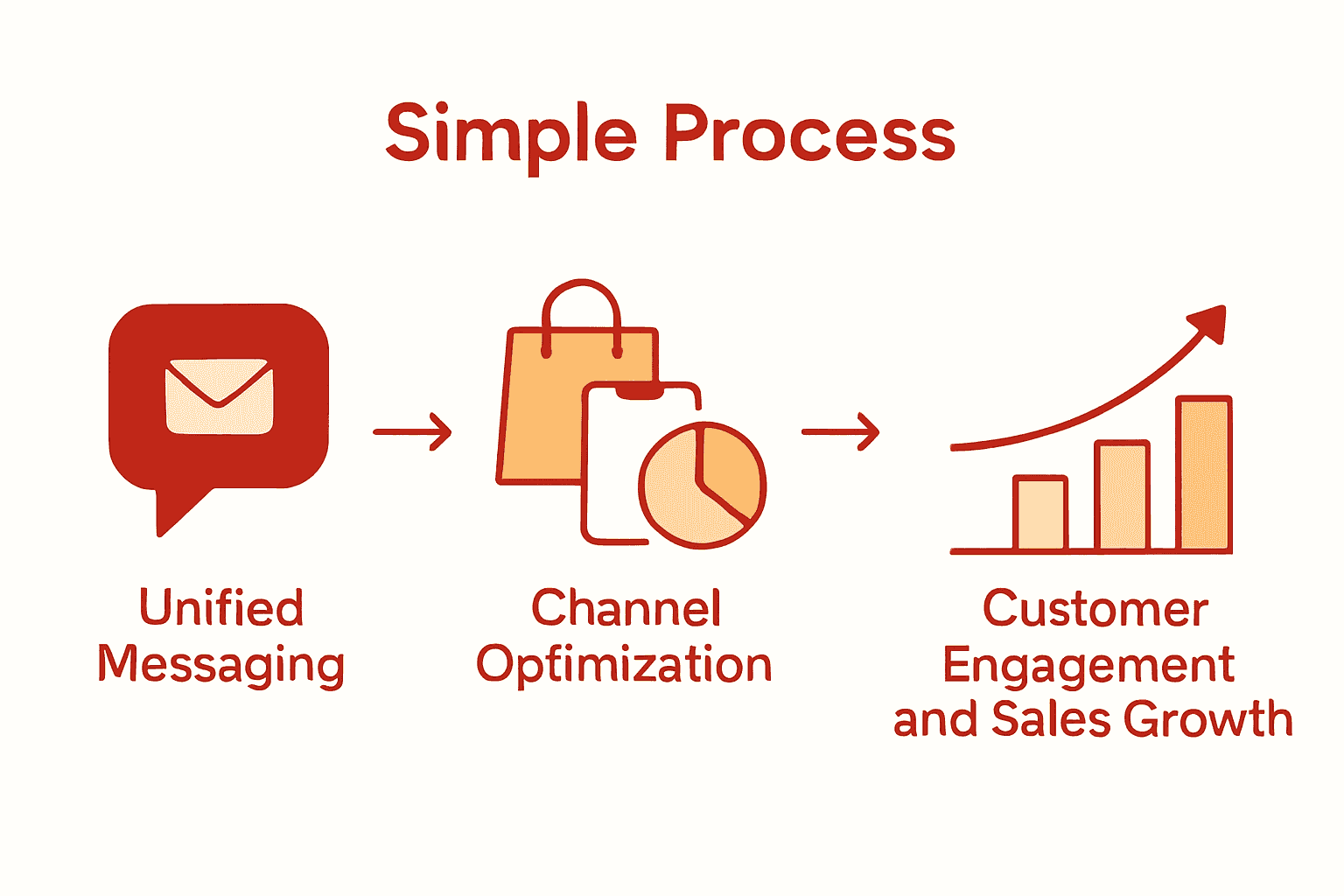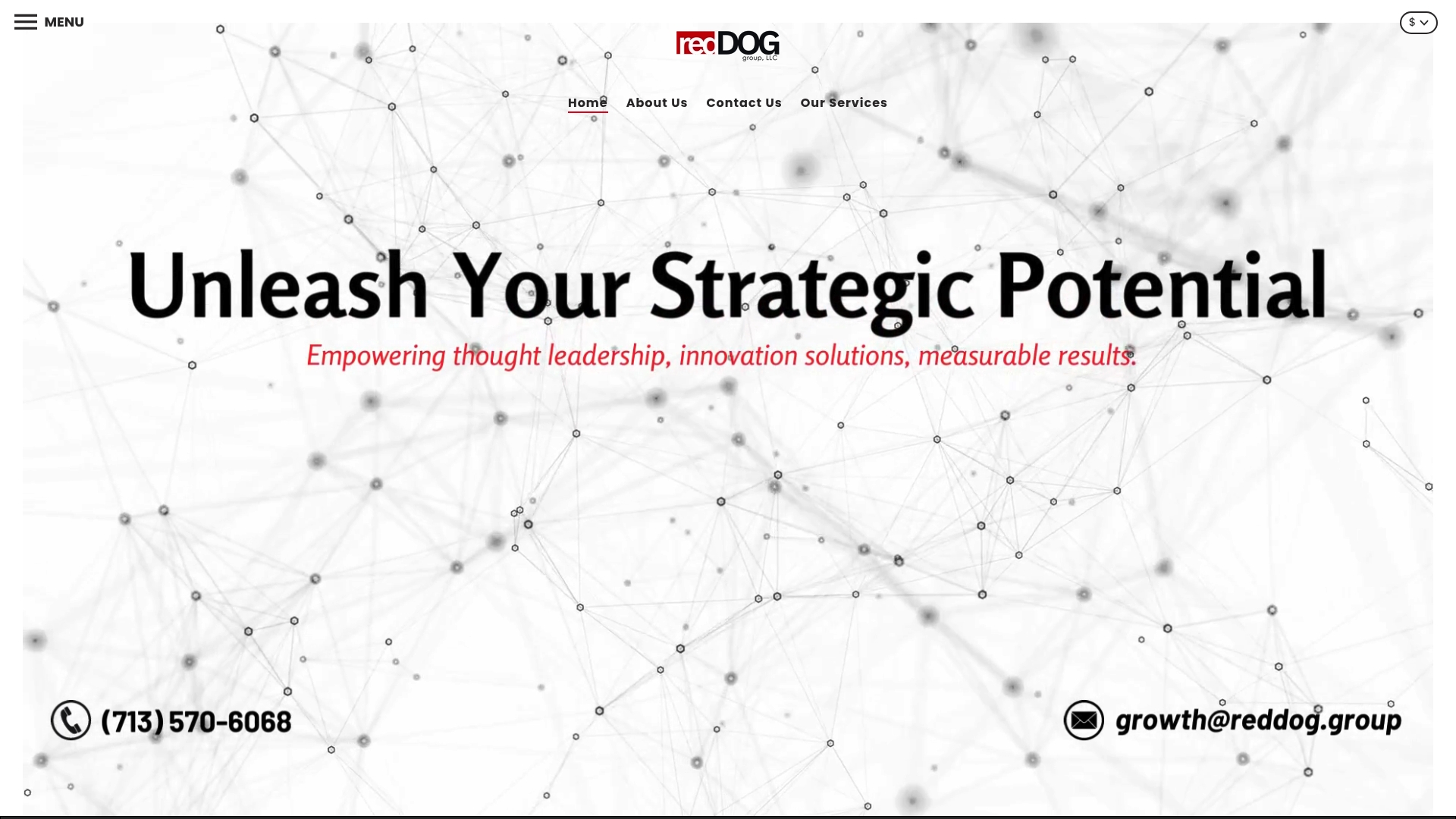
Content Strategy: Essential Role in Omnichannel Growth
Posted on
Most retail brands miss valuable opportunities when their content feels disconnected across platforms. With over 60 percent of shoppers expecting a seamless experience both online and in store, a unified content strategy has become vital. When every piece of content works together, brands capture attention, build trust, and make the customer journey easier. This guide breaks down how smart content choices can connect every touchpoint, helping retailers grow stronger in a crowded market.
Table of Contents
- Defining Content Strategy For Retail Brands
- Core Functions In Omnichannel Environments
- Types Of Content And Their Uses
- Impact On Brand Growth And Sales
- Common Content Strategy Mistakes To Avoid
Key Takeaways
| Point | Details |
|---|---|
| Unified Content Strategy | Retail brands must develop a cohesive content strategy that delivers consistent messaging across all platforms to enhance customer engagement. |
| Channel Optimization | Tailoring content to specific platforms is critical for maximizing reach and effectiveness, thereby improving customer experience. |
| Data-Driven Approach | Regularly tracking and analyzing content performance is essential for refining strategies and ensuring alignment with customer preferences. |
| Avoiding Common Pitfalls | Brands should be wary of common mistakes such as neglecting channel-specific content needs and inconsistent messaging, which can harm brand perception. |
 |
|
Defining Content Strategy for Retail Brands
A content strategy is a comprehensive roadmap that guides how retail brands create, distribute, and manage content across multiple channels to engage customers and drive growth. According to etomite.org, an effective omnichannel content strategy ensures a seamless and consistent brand experience across various platforms and devices.
At its core, content strategy involves understanding your target audience, defining clear communication objectives, and developing a systematic approach to content creation that resonates with customers at every touchpoint. This means crafting messaging that is not just consistent, but also tailored to the unique characteristics of each channel. Blanquerna emphasizes the importance of selecting appropriate content formats that effectively reach specific target audiences.
Key components of a robust content strategy for retail brands include:
- Unified brand messaging across all platforms
- Detailed customer persona development
- Content mapping for different stages of the customer journey
- Channel-specific content optimization
- Consistent visual and tonal branding elements
Effective content strategies transform fragmented communication into a cohesive narrative that guides potential customers from initial awareness to final purchase, creating a seamless and engaging shopping experience that drives long-term brand loyalty and growth.

For a deeper exploration of multichannel approaches, check out our guide on omnichannel retail strategies.
Core Functions in Omnichannel Environments
The core functions of omnichannel environments represent a sophisticated approach to integrating customer interactions across multiple platforms and touchpoints. According to research from the Eau Heritage Journal, these functions are fundamentally about creating an integrated communication strategy that facilitates seamless customer access to organizational information and services.
Key core functions in omnichannel environments include:
- Unified data management and synchronization
- Cross-platform customer experience tracking
- Real-time inventory and availability monitoring
- Personalized communication and targeting
- Seamless transaction processing across channels
The complexity of implementing these functions cannot be understated. FHSS Journal highlights significant challenges such as data distortion and platform fragmentation, which require sophisticated data verification mechanisms and enhanced inter-platform collaboration.
Successful omnichannel environments go beyond mere technical integration.
They create a holistic ecosystem where customer interactions are fluid, personalized, and consistent, regardless of whether the touchpoint is digital, physical, or a hybrid interaction. By breaking down traditional channel silos, businesses can deliver a more responsive and intuitive customer journey.
To understand how these strategies translate into practical growth, explore our guide on omnichannel strategies for retail growth.
Types of Content and Their Uses
Content types are the building blocks of an effective omnichannel strategy, each serving a unique purpose in engaging and converting customers. Blanquerna emphasizes that selecting the right content format depends critically on understanding both the message and the target audience.
The primary content types for retail brands include:
- Product Descriptions: Detailed, persuasive narratives that highlight features and benefits
- User-Generated Content: Customer reviews, testimonials, and social media interactions
- Educational Content: How-to guides, tutorials, and informative blog posts
- Visual Content: Product images, lifestyle photography, and video demonstrations
- Interactive Content: Quizzes, calculators, and personalized recommendation tools
According to Etomite.org, the key to successful content deployment is maintaining consistent branding and messaging across all these formats. This means ensuring that whether a customer encounters a product video on Instagram, reads a blog post, or checks a product review, they receive a unified brand experience.
Successful content strategies go beyond mere information delivery. They create a narrative ecosystem that guides customers through their entire journey, from initial awareness to post-purchase engagement. By carefully crafting and distributing diverse content types, brands can build trust, provide value, and ultimately drive conversions across multiple channels.
To explore more about developing a comprehensive content approach, check out our guide on omnichannel marketing integration.
Impact on Brand Growth and Sales
Omnichannel content strategies are transformative mechanisms for driving brand growth and sales performance. International Journal of Management Science and Information Technology research reveals a significant correlation between comprehensive multichannel marketing approaches and enhanced sales performance, highlighting the critical role of strategic content deployment.
Key impacts on brand growth and sales include:
- Increased customer engagement across multiple touchpoints
- Enhanced brand visibility and market reach
- Improved customer retention and loyalty
- More sophisticated tracking of customer interaction patterns
- Higher conversion rates through personalized experiences
DOAJ Research emphasizes that successful omnichannel strategies are fundamentally about understanding customer interactions across diverse channels. This deep comprehension enables brands to create more targeted, responsive marketing approaches that directly influence purchasing decisions and brand perception.
The true power of an omnichannel content strategy lies in its ability to create a seamless, integrated customer experience that feels natural and intuitive. By breaking down traditional marketing silos and creating a unified narrative across platforms, brands can significantly reduce friction in the customer journey, ultimately driving more meaningful engagement and sustainable sales growth.
To gain deeper insights into leveraging branding for business expansion, explore our guide on understanding the role of branding in growth.
Common Content Strategy Mistakes to Avoid
Content strategy failures can derail even the most promising omnichannel initiatives. Etomite.org warns that inconsistent messaging across platforms is one of the most critical mistakes brands can make, potentially causing significant customer confusion and brand perception damage.
The most common content strategy mistakes include:
- Neglecting channel-specific content optimization
- Inconsistent brand messaging across platforms
- Failing to track and analyze content performance
- Overlooking customer journey mapping
- Ignoring data verification and quality control
FHSS Journal highlights the challenge of platform fragmentation, emphasizing that brands must establish robust data verification mechanisms to prevent content strategy breakdowns. This means developing a comprehensive approach that goes beyond surface-level content creation and focuses on strategic, data-driven communication.
Most brands stumble by treating content as a one-size-fits-all solution. The reality is that each channel requires a nuanced approach that respects its unique audience characteristics, consumption patterns, and engagement expectations. Successful content strategies demand continuous learning, adaptation, and a willingness to pivot based on real-world performance metrics.
To strengthen your approach to multichannel content development, explore our guide on mastering the omnichannel strategy process.
Unlock the Full Potential of Your Omnichannel Content Strategy
Struggling with inconsistent messaging or fragmented customer experiences across channels can hold back your retail brand’s growth. This article highlights the critical need for unified brand messaging, channel-specific optimization, and real-time data management to truly engage customers at every touchpoint and maximize sales impact. Don’t let common pitfalls like poor content tracking or platform fragmentation keep you from achieving seamless omnichannel success.

Take control of your content strategy with expert guidance from Reddog Group. We specialize in transforming complex omnichannel challenges into streamlined, revenue-driving solutions for retail brands. With extensive experience managing over 50 brands and 30,000 SKUs, we deliver proven growth in marketplace management, Amazon FBA, DTC channels, and integrated sales strategies. Start building a consistent and compelling narrative that resonates across all platforms today. Visit Reddog Group to explore tailored marketing campaigns, product listing optimization, and strategic consulting that will boost your omnichannel success now.
Explore how to Master the Omnichannel Strategy Process and learn about Omnichannel Marketing Integration to fuel your retail brand’s growth.
Frequently Asked Questions
What is a content strategy in the context of retail brands?
A content strategy for retail brands is a comprehensive roadmap that guides the creation, distribution, and management of content across multiple channels, aiming to engage customers and drive growth by maintaining a consistent brand experience.
Why is an omnichannel content strategy important for brand growth?
An omnichannel content strategy is important for brand growth as it enhances customer engagement, increases brand visibility, improves customer retention, and leads to higher conversion rates by ensuring a seamless experience across various platforms.
What are some common types of content used in an omnichannel strategy?
Common types of content in an omnichannel strategy include product descriptions, user-generated content, educational resources, visual content like images and videos, and interactive content such as quizzes and tools, each tailored to engage customers effectively.
What mistakes should brands avoid when implementing a content strategy?
Brands should avoid mistakes like neglecting channel-specific content optimization, inconsistent messaging across platforms, failing to track content performance, overlooking customer journey mapping, and ignoring data verification processes.
Recommended
- 7 Types of Omnichannel Strategies for Retail Growth | Reddog Consulting Group
- Understanding Why Build Omnichannel Presence for Growth | Reddog Consulting Group
- How to Boost Omnichannel Sales for Retail Success | Reddog Consulting Group
- How to Start Omnichannel Sales for Retail Success | Reddog Consulting Group
- What Is Content Strategy? A 2025 Guide for Businesses
Leave a comment: